There are many landscape photographers looking at the new Fuji 20-35/4 and saying, “It’s about the same weight and size as the 23mm f/4 GF prime. Why don’t I ditch my 23 and go with this more versatile lens?”
What’s wrong with that idea? For sharpness and distant subject field curvature, not much.
I started with a tree 100 meters away in the center of the image.
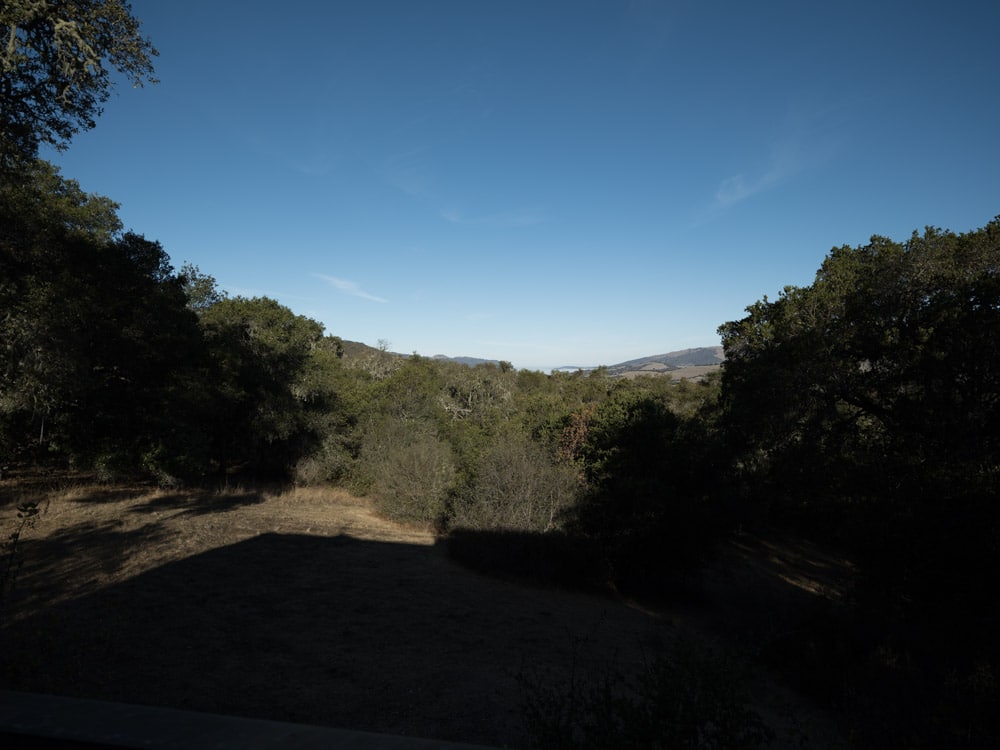
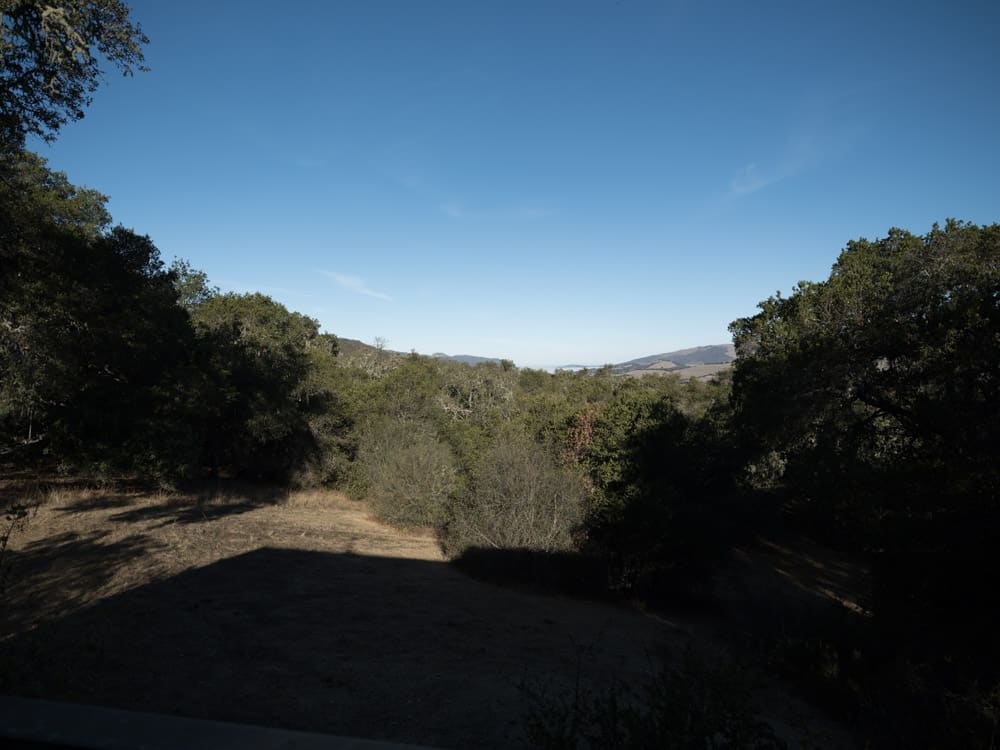
I panned the camera so that the tree fell on the right side near the edge. I made pictures focusing in the center, and also without refocusing from the point where the tree was sharpest in the center. I made two sets of images, and picked the sharpest ones. The Fuji manual focusing at high magnification with peaking is good enough that both sets of images were about the same sharpness.
I used the side instead of the corner a) because it was easier, and b0 because I thought it was more realistic for landscape photography, where the subject distance at the corners of the image is usually not the same as to the center.
Details:
- GFX 100S
- 2-second self timer
- ISO 100
- Manual focus
- Low red peaking
- Maximum magnification
- RRS legs, C1 head
- Developed in Lr CC with defaults except for
- Adobe Standard Profile
- Sharpening amount 20, radius 1, detail 25
- Daylight color balance
Here are some crops at about 250% magnification.
At f/4:
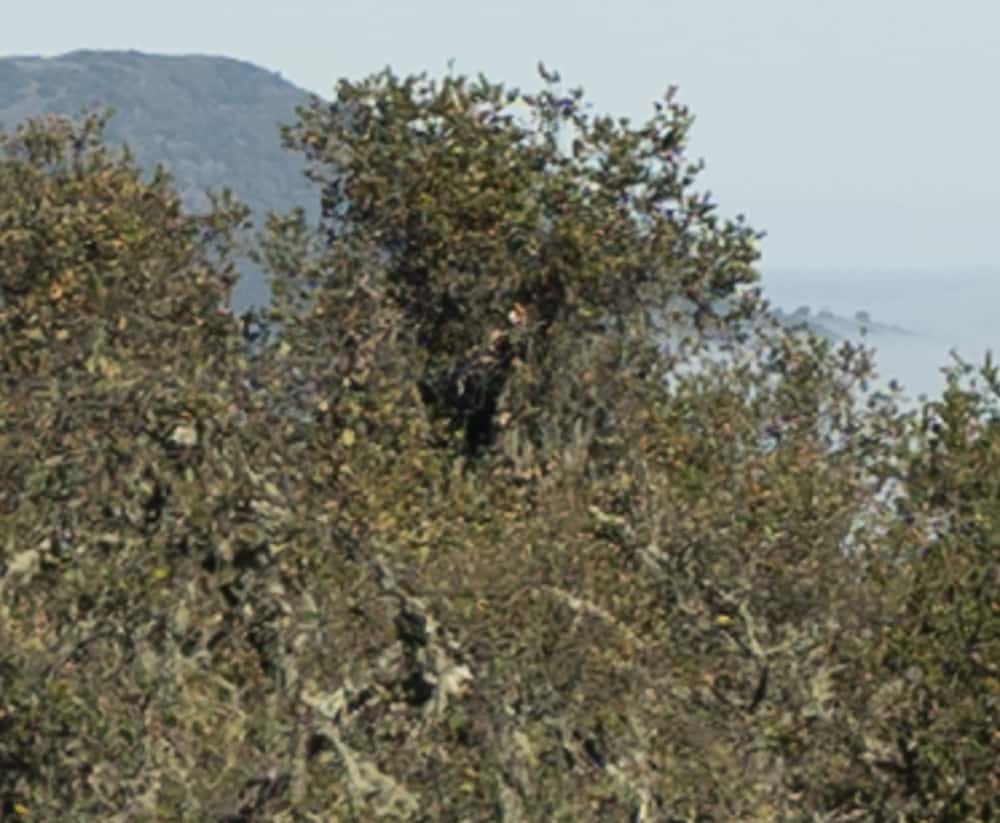
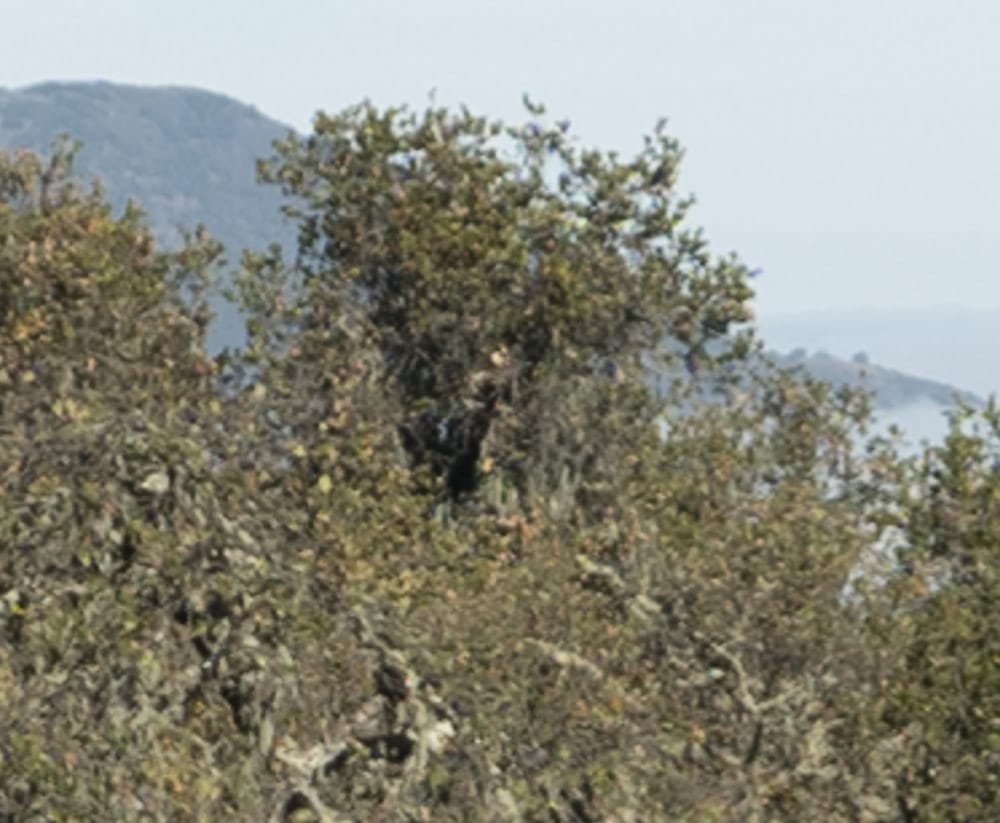
About the same. If anything, the prime is softer.
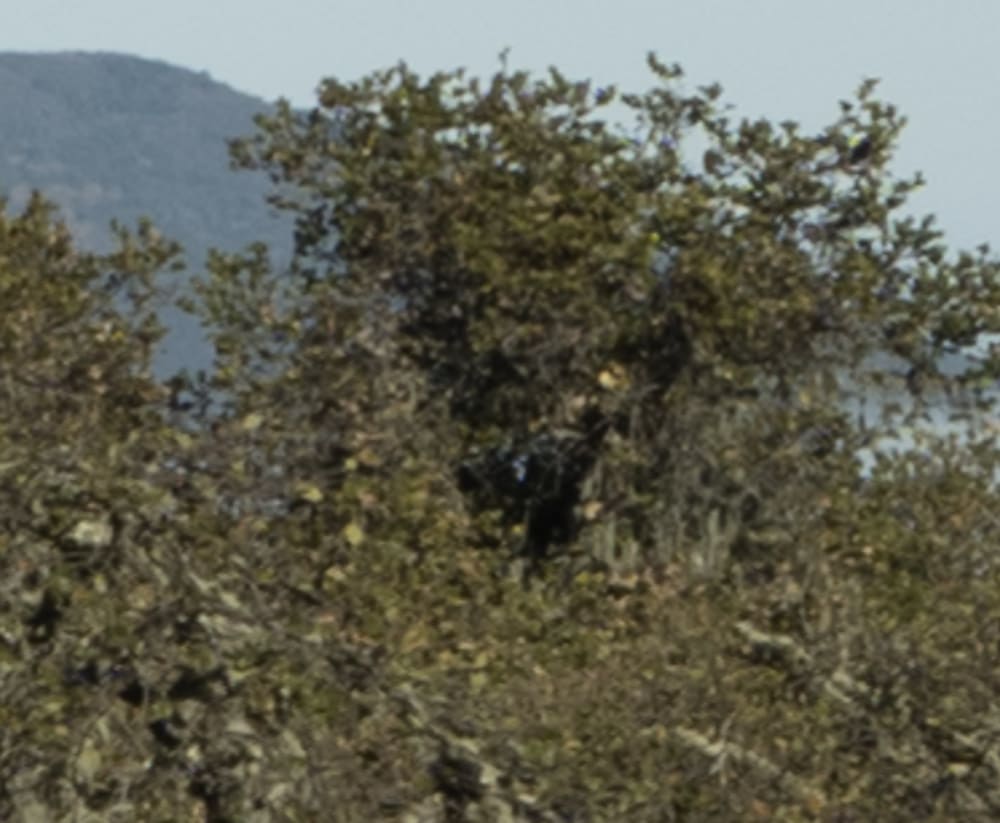

I don’t see a lot of difference here. The 23 prime has a bit more snap.
At f/5.6:
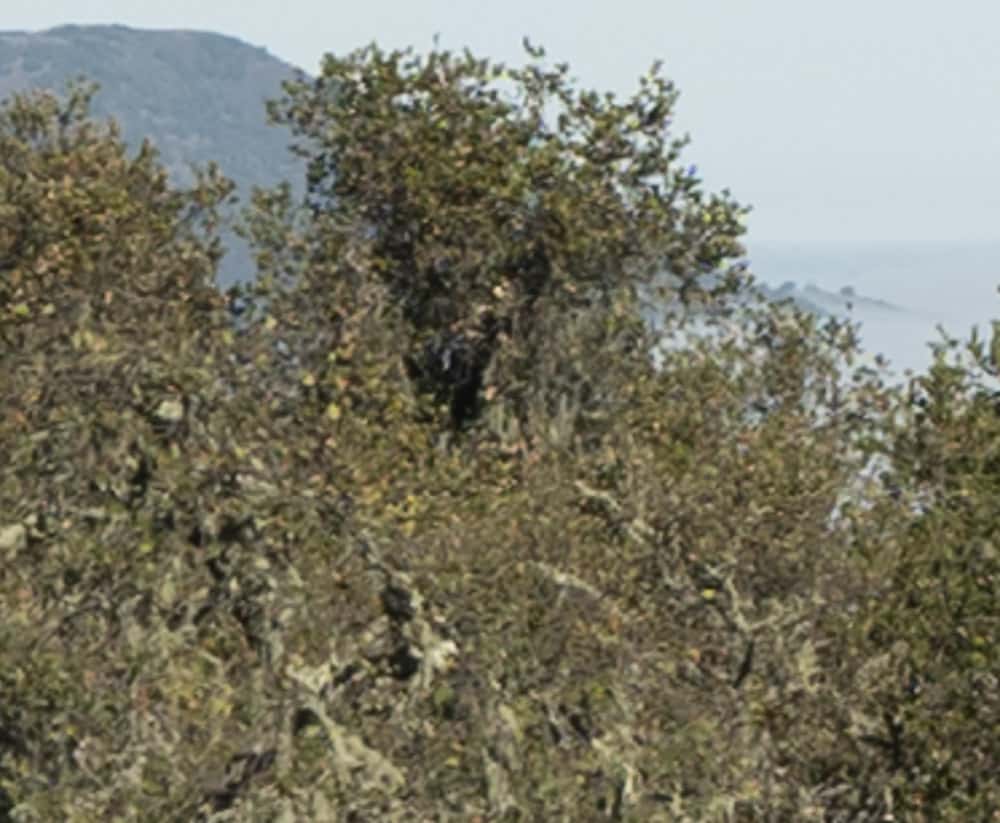
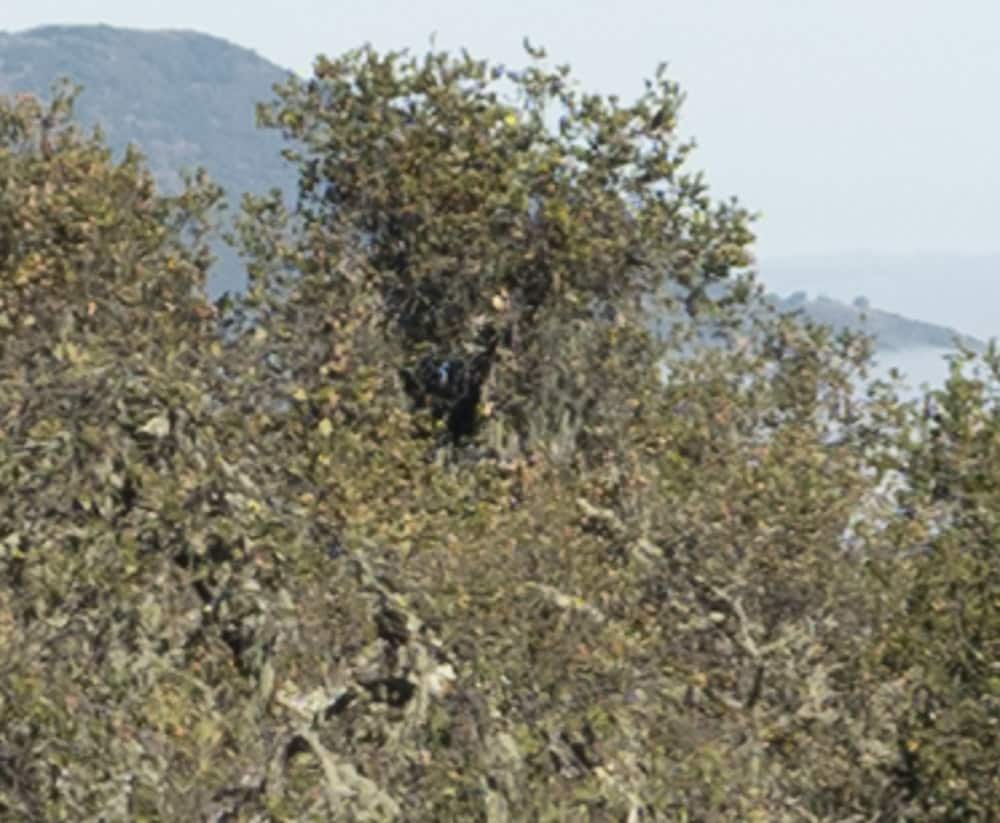
Again, not much difference in the center.
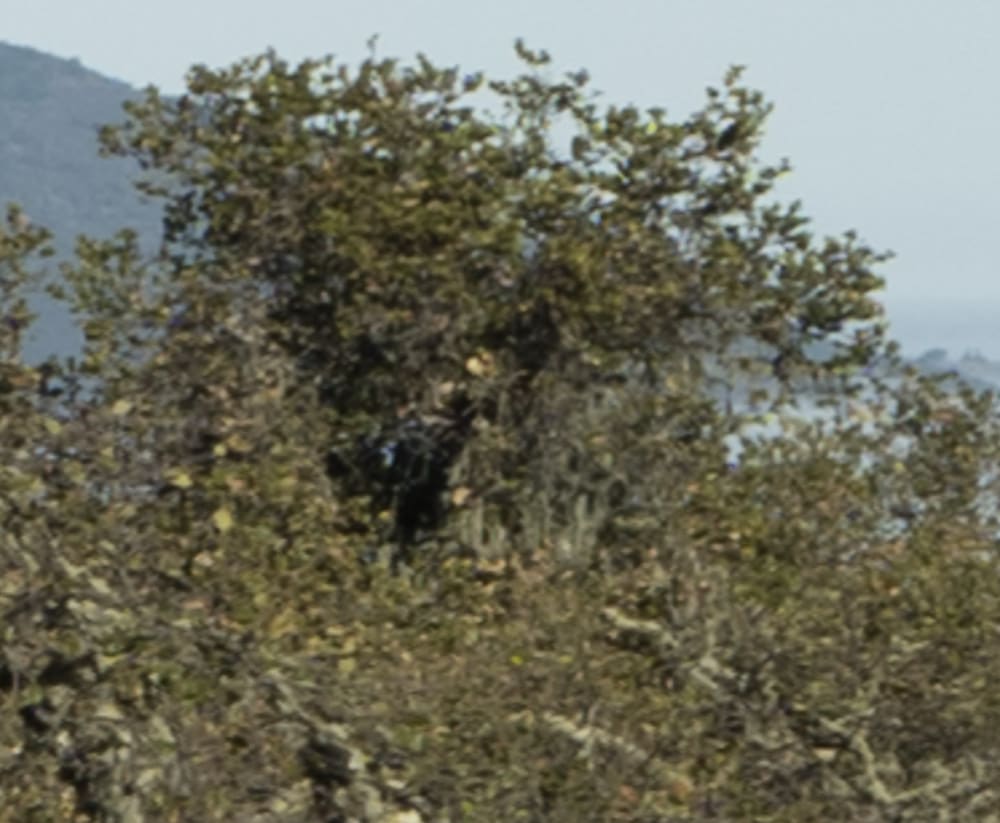
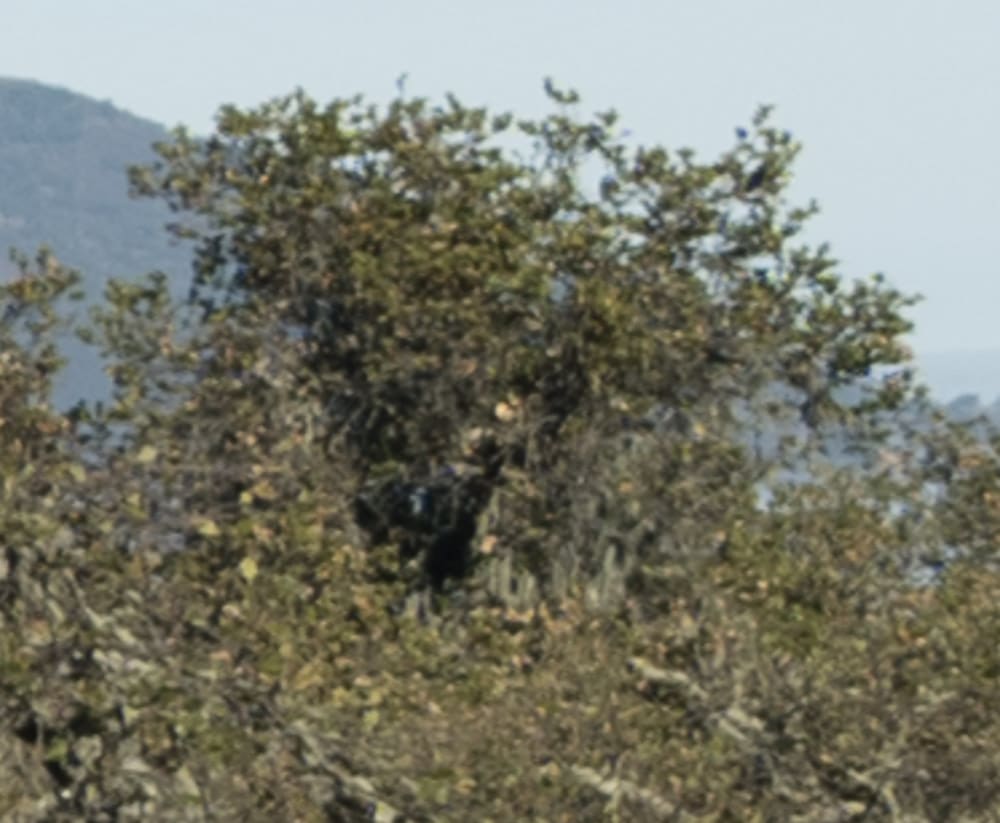
Not that different.
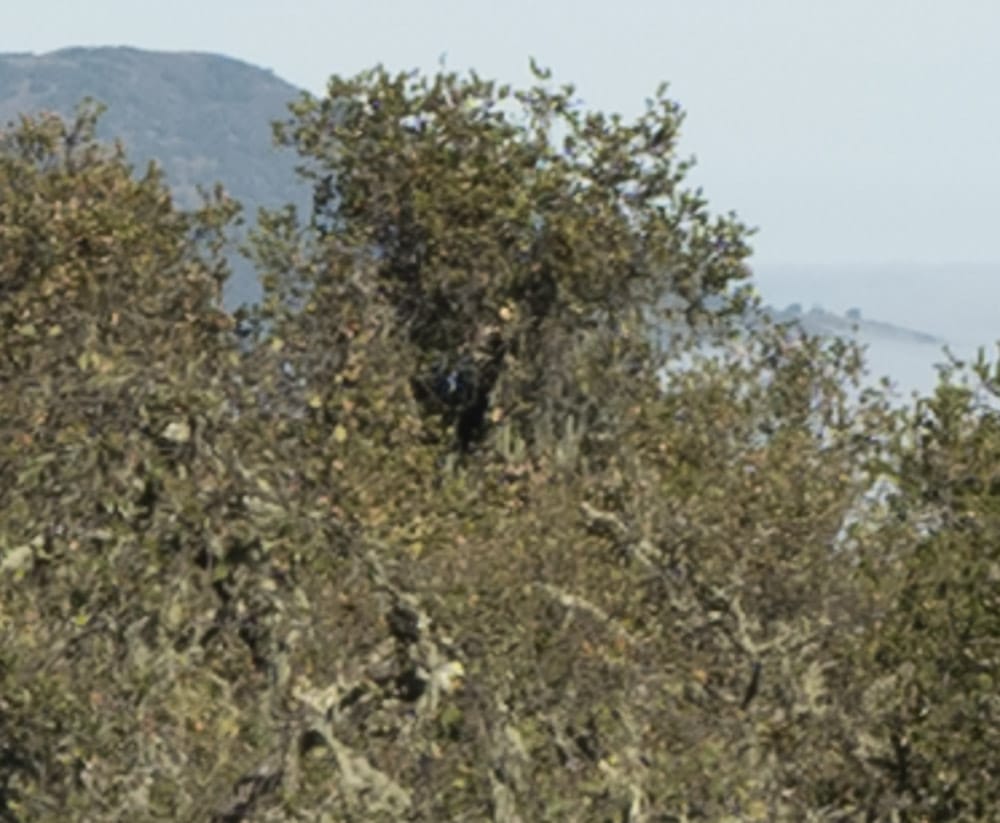
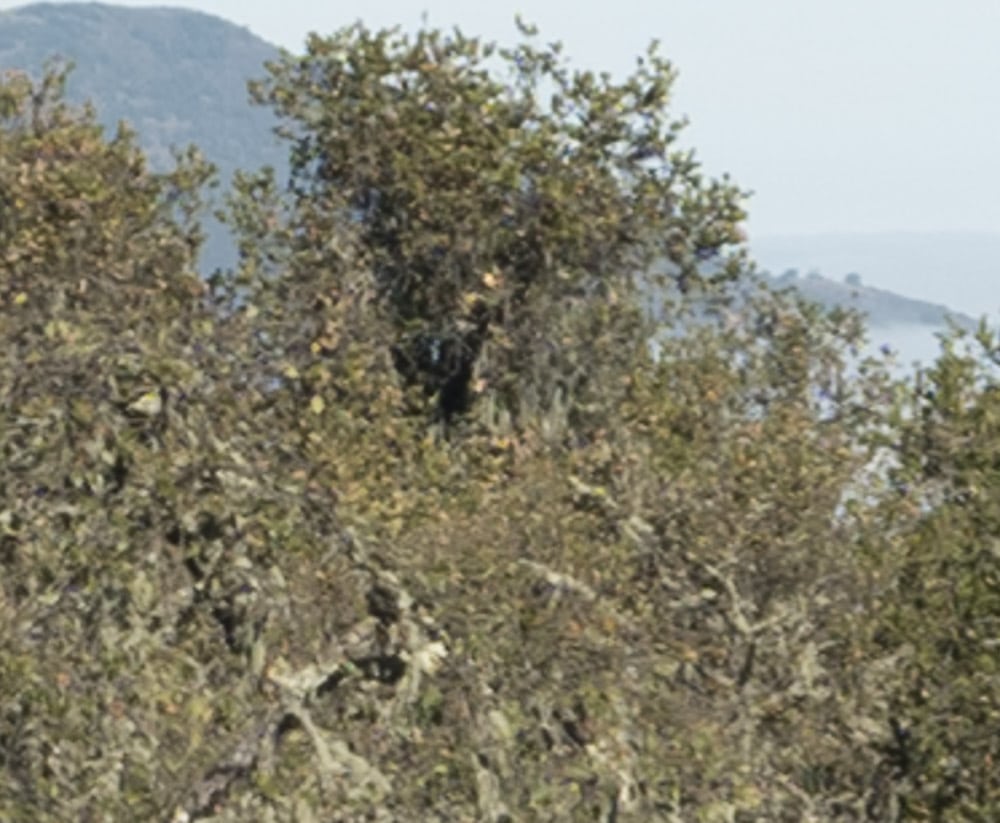
Not much difference.
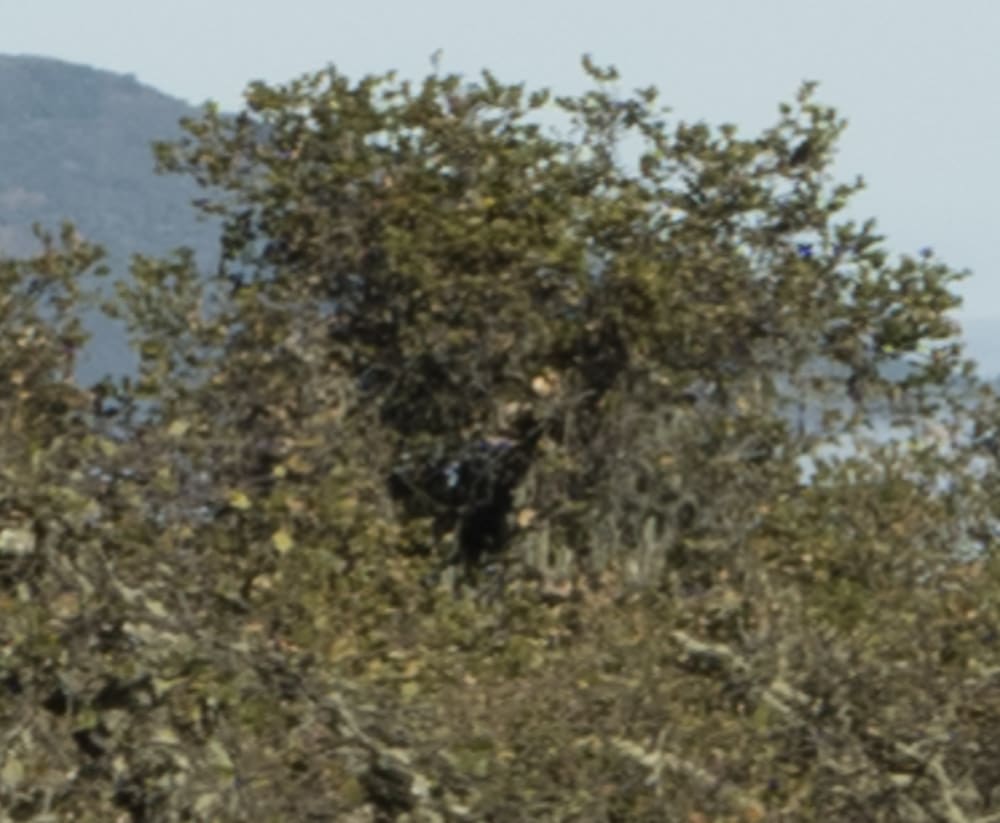
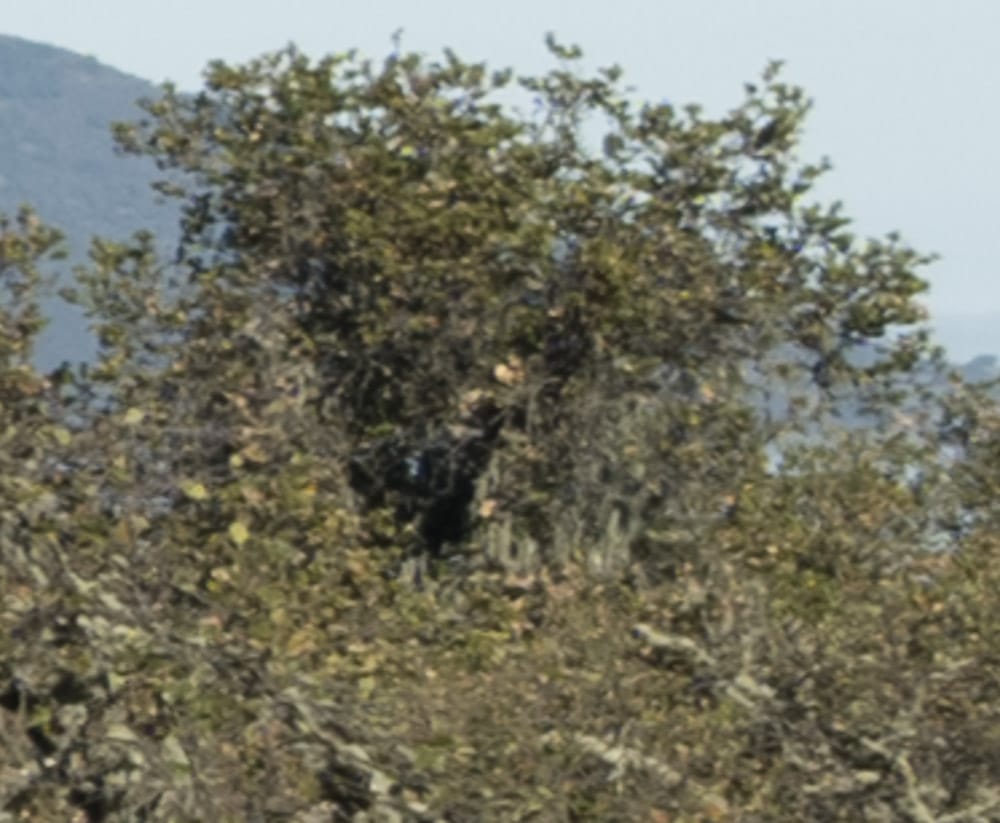
The 23 has more contrast.
And finally, at f/11:
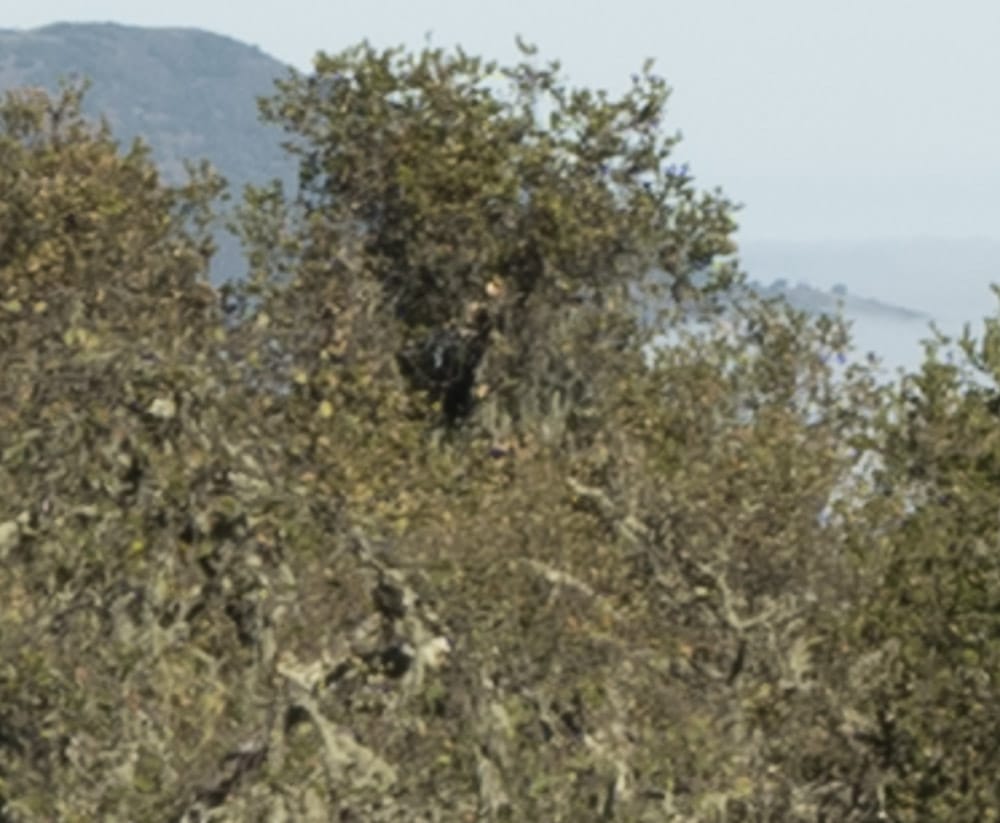
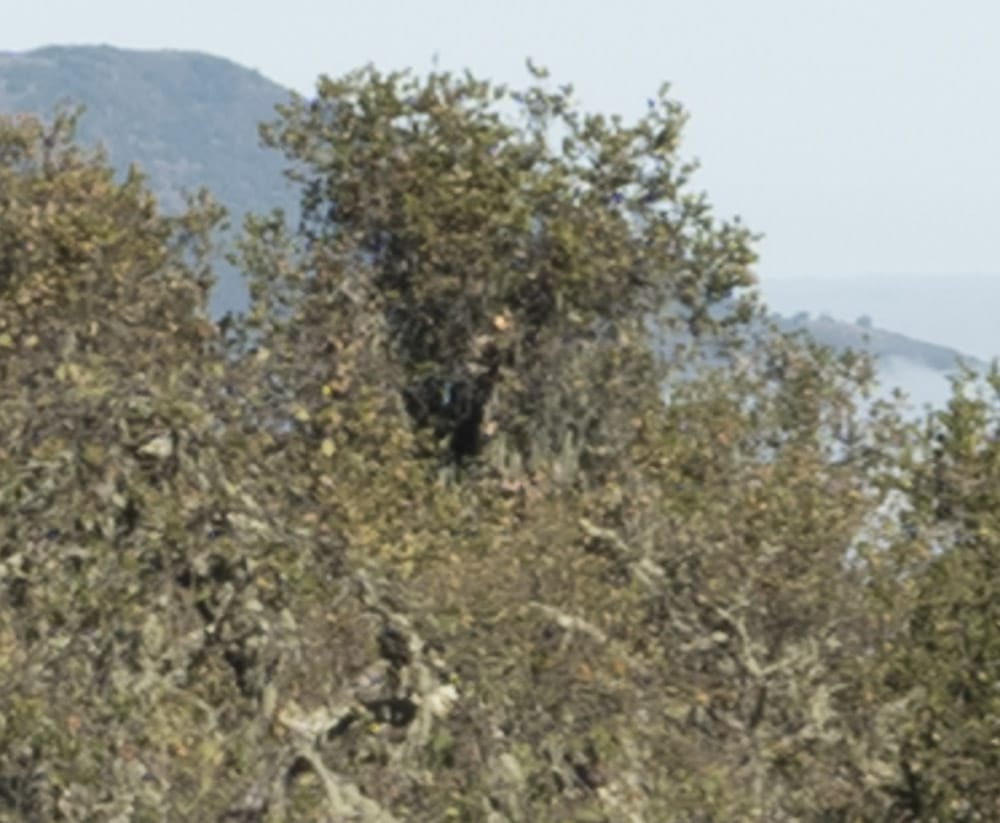
A bit more contrast with the prime.
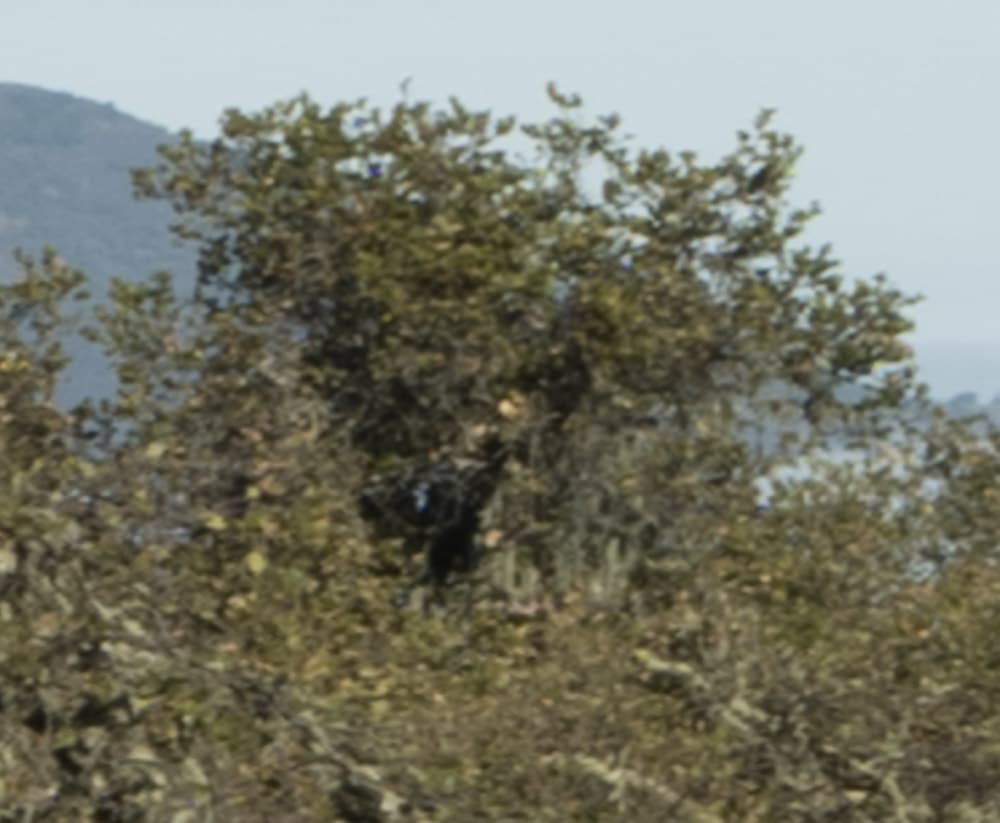
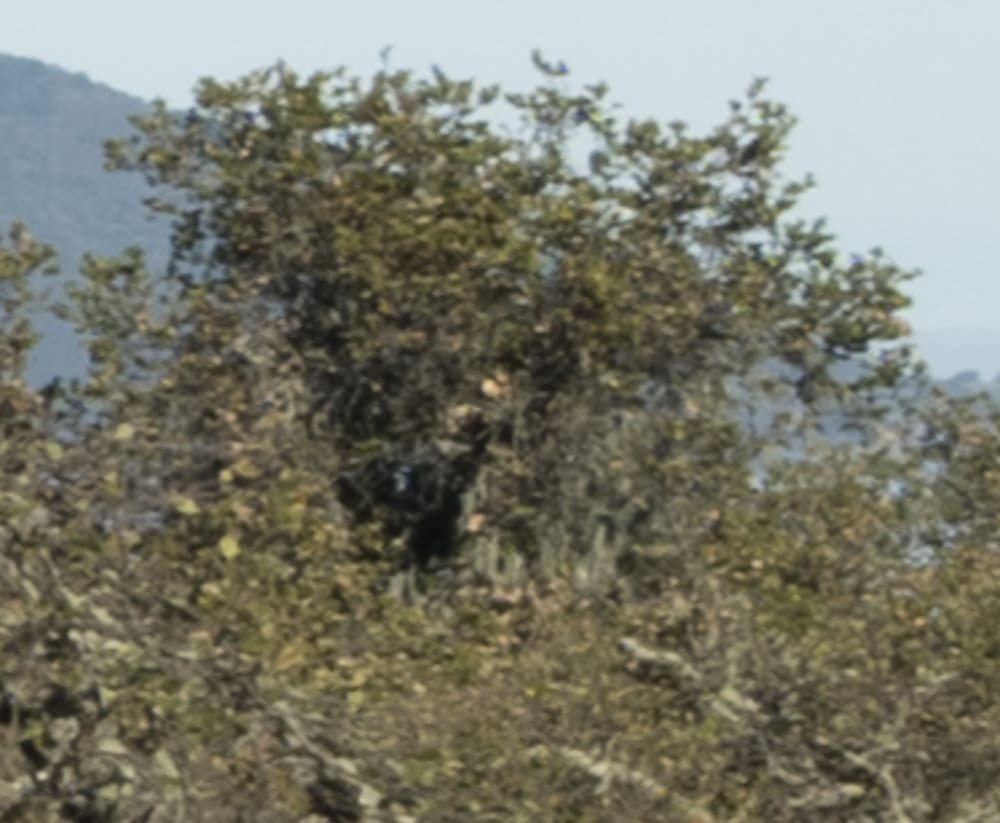
Again, a bit more contrast with the prime.
Thank you for this. Any more comparisons greatly appreciated
Hey Jim, I like this test! Amazed at the results. I assume there was no wind blowing those branches around! LOL. I like that outdoor test.
I’m amazed that the zoom approaches my beloved 23, which I’m shooting with right now in Sardinia, with my new 100s, which I like a lot more than the big 100.
I’m getting the zoom. Wish I had it now.
Thanks,
Greg
I do these tests early in the morning, before the wind comes up. The fastest shutter speed was 1/1000. The slowest was 1/125. Enjoy Sardinia, Greg!
Greg, you like the Q2, right? At the risk of depleting your bank account, you might consider the X2D. It handles a lot like a big Q2.
Thanks 🙂
thank you very much! For a great job! You’re great.
I and many other GFX users would be very grateful if you could do a similar test, but only in terms of detail and distortion at the corners and edges of the photo. Thanks again!
There are already images at the right edge of the frame in landscape orientation.
Hey Jim, it what areas if any you think the 23 excels vs the zoom? Obviously, not in these two. But, perhaps the zoom has more distortion uncorrected. Anything else? I’d really love a prime 35mm for the GFX. That seems to be the weakest focal length for this zoom.
Contrast. Flare. But for most people the zoom will do just fine.
I read several times how you proceeded for the “not refocused”shots, but couldn’t be sure… Did you first have the tree in the center, focused on it, and then panned (turned) the camera to get the tree at the border? Something you wrote generated some confusion: “…the subject distance at the corners of the image is usually not the same as to the center”… This is true, but is also true if you consider the image borders… What is on the border is usually farther than what is in the center…
An ideal rectilinear lens has a flat focal plane, so off axis subjects are brought into focus further away than on axis ones.
Yes, the method used was focus and recompose.
If you focus and recompose, the tree so won’t be anymore in the focal plane… A 23mm lens has an approximate 87.4° horizontal field of view, the half being 43.7°… You may have panned a bit less, let’s take 42°. If you panned the camera 42° , when looking in the tree direction, the intersection with the focal plane will be 135m away (=100m / cos(42°) )… However the tree still is 100m away… Can’t this affect the outcome of your tests?
Do the DOF calculations, and you’ll see. I did them before I ran the test.